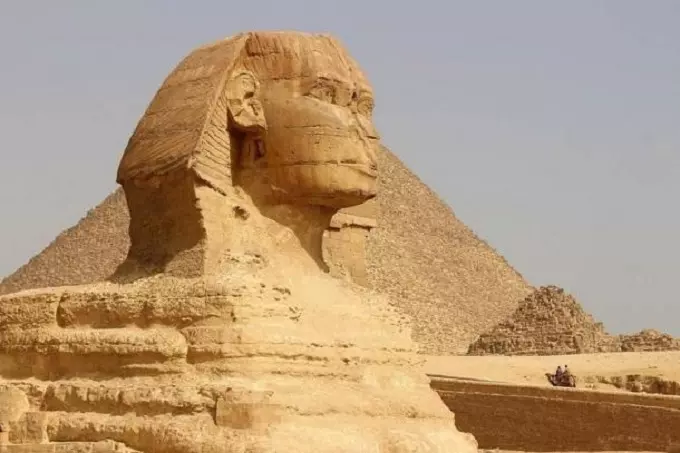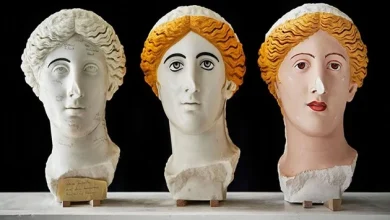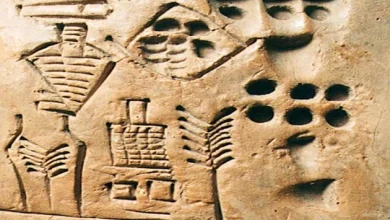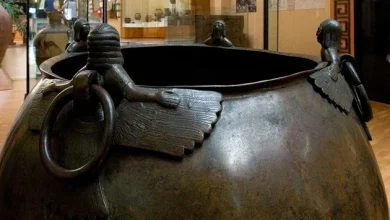The mystery of the origin of the Sphinx

The Sphinx is a horrible mythical creature with the face of a man, the body of a lion, and an eagle’s wings. According to Greek mythology, the Sphinx was sent by the gods to punish the city of Thebes in Greece – hence the sphinx mystery – although it is also an image common to many civilizations.
For example, the Arabs knew the famous Sphinx in Egypt, now called the Sphinx of Giza, by the name Abu al-Houl (meaning “Father of Terror”), which is obviously identified with the ancient Greek myth.
The Sphinx means “to bind” or “to squeeze” in Greek, but this is not necessarily related to the legends. The most famous Sphinx in the world and the oldest is located in Egypt next to the Great Pyramid of Giza. It is a large monolithic monument 73 meters (240 feet) long and 20 meters (65.6 feet) high and was carved out of a single mass of natural limestone in the area and faces the sun. According to conventional archaeology, the Sphinx of Giza dates back to 2,500 B.C.
The main question for archaeologists is who built this famous Sphinx in Egypt and why? Mainstream archaeology agrees that the Sphinx was built for Pharaoh Khafre and served the religion of the sun god Ra.
Nevertheless, this is an assumption since there is no inscription on the wall or papyrus identifying Khafre; however, references to the Sphinx in ancient Egyptian texts can be identified as the giant Anubis at Giza, Robert Temple argued in The Sphinx Mystery. Nevertheless, as Egyptologist James Allen writes in Smithsonian Magazine, “we have no hard evidence of who its builders thought the Sphinx was.”

Meanwhile, Dr. Robert Schoch, a geologist, and professor at Boston University, studied the patterns on the Sphinx and found that the weathering patterns could not be the result of wind but only of heavy rain. This observation suggested that the Sphinx is much older than 2500 B.C., since there were no such heavy rains in that era.
However, if this theory is correct, why are there no such patterns on any of the other surrounding monuments, including the pyramids of Giza? Another theory supporting this one suggested that the Sphinx was oriented according to the constellation of Leo, as it was located about 10,000 years B.C.; however, mainstream archaeologists have stepped forward to prove it wrong.
According to Smithsonian Magazine, Edgar Cayce, a modern-day prophet, predicted in 1932 that the Sphinx in Egypt was built in 10500 B.C. by Atlanteans, and that beneath it was a secret room, called the Hall of Records, containing the secrets and wisdom of the Atlantean civilization and the human race.
The idea of this secret room was also adopted by the Rosicrucians, who, as we know, possessed knowledge inaccessible to most people. Since then, many have searched for rooms and tunnels under the Sphinx in Egypt, and recent modern instruments have indeed discovered cavities under the Sphinx at Giza that may well be rooms.
In his book The Secret Room: The Quest for the Hall of Records, Robert Boval mentions that Egyptian archaeologist and former Egyptian Minister of Antiquities Zahi Hawass excavated in front of the Sphinx and discovered red granite instead of natural limestone in the area. Boval argued that this could mean there was something under the Giza plateau.
Some have suggested that the chamber has been found and is being kept secret, which can easily be understood if the chamber must contain a vast amount of information, as Case prophesied. If one follows this line of thinking, such information would be “dangerous” to our society; too much truth at once is not something our civilization, much less the authorities, enjoy.
There are too many coincidences and too many similarities between sphinxes and what they represent around the world. Have the mysteries of the Sphinx in Egypt been solved? Is it really a monument built by the Atlanteans?
If so, I can only guarantee that it will take time for this information to become public-if it ever becomes public.




